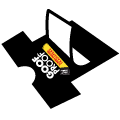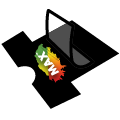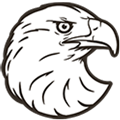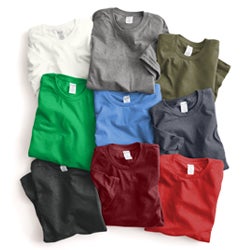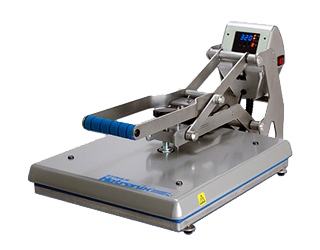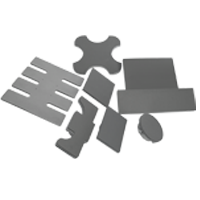How To Calculate Profit Margins for Small & Home Based Businesses
Browse Video Categories
Transfer Application | Artwork & Apparel | Easy View Tutorials | Webinars | Ordering Tips | Business | Heat Presses
Hey friends! Dave here from Transfer Express. Today, we’re talking profits- from calculating costs, to expenses and yes, paying yourself or employees.
We’ll first touch on the basics to help ensure your business is making money, then we’ll breakdown some simple pricing scenarios and find out what you’re actually able to take to the bank.
Ready? Let’s talk money.
Over the past few years I’ve talked to a lot of small and home based apparel-decorating businesses and hobbyists looking to take their passion to the next level and get into ‘real-deal’ business. Now, the biggest difference from a t-shirt printing hobby to a t-shirt business is that a hobby is for recreation, a business is for profit. But many hobbyists (or sometimes even existing businesses) don’t know where to start with valuing their time or services properly. So, let’s dive in to some simple steps to get you on the way to having a clear idea of what your profit margins looks like.
One last thing to mention before we start is to think of the ‘why’- I’m always about setting attainable goals and they’re a great spot to start to keep in mind when we talk about calculating profits. Are you looking to replace your old 9-5 salary? Trying to pay off your investment into equipment? Maybe your goal is to purchase a new house? Car? Set aside extra dough for your child’s college fund? What’s motivating you? It all helps when diving into the money side of the equation.
Ok, with that in mind, the first thing we need to look at here is your expenses. To keep track of profits, you need to have a complete understanding of every single expense you have. This includes all the overhead costs: everything from rent, utilities, equipment, supplies, maintenance, insurance, technology like computers or website fees or software subscriptions (looking at you Adobe), marketing spend and even stuff like travel expenses.
Be sure you’re recording every dime you spend, in a spreadsheet or accounting software of your choice. Not only will this help with calculating profits, but you’re going to thank yourself for these detailed records come tax time.
Next, let’s calculate our revenue. This should include all online sales, in-person sales, wholesale orders or any other way that money is coming in. Are you doing custom t-shirt designs? Record any and all incoming cash in that same spreadsheet or accounting software.
Next up, determine the cost of goods sold. This is YOUR cost to produce items. This is where you can record the cost of blank apparel, headwear or accessories, then, the decoration cost (in our case here, how much our heat transfers cost), and any shipping costs to get the supplies to you. Last but not least, the number one most overlooked cost- labor. Factor in how much you value your time. If you think a job will take 2 hours of time, and you value yourself at $20/hr, be sure to include $40 in the cost of the order.
This cost of goods sold should be as accurate as possible, because when you’re quoting out jobs, this is the most important figure to keep in mind to ensure you’re not selling yourself short. Include the sometimes overlooked sales taxes (if you don’t have a reseller's permit or tax exemptions set up yet). Just use the final invoice numbers (at the end of the checkout process) instead of just looking at the price displayed on the website.
Sometimes calculating the labor can be tricky, especially if you’re just getting started and don’t have a picture perfect idea of how long a certain job is going to take you. That’ll come with experience, so often times you’ll hear the advice of setting your retail price at cost times two- essentially, doubling the cost. That’s what you’ll charge your customer. We’re talking about paying yourself here. If you have an employee, you know what you’ve agreed to pay them per hour of work. Now, in most cases, doubling the cost can more than cover your expenses and labor too- simplifying some of these calculations, allowing more time to be actually printing. Cost x2 is a safe start, but you might find gaps (maybe with low cost blanks or small orders) where you’re not making as much profit as you want to be. That’s really where the value of calculating the cost of goods sold comes in.
So essentially, your cost of goods sold, subtracted from total revenue is going to give you your gross profit. So if you made $400 on an order this week that cost you $200 to produce, our gross profit here is $200. Pretty good right? Right!
Well, now we’ll calculate our net profit, or essentially what our take home pay is. For this we’ll take gross profit, and subtract our expenses we compiled in our first step here. So following with our example from gross profit, let’s say we made that $200 in gross profit from the order in one week. Say our monthly expenses for utilities, our advertising and website costs us $400 per month. We’ll divide that 400 between our 4 weeks of the month, so $100 per week, and now we’ve made $100 in pocketable cash on this order, this week all things considered.
Of course in a one-week snapshot here, we certainly get the idea of how the rest of our month is looking. And a good grasp of our profitability as a whole, but, you’ll get a much clearer picture consolidating your profit analysis to the end of the month. So, let’s look at a whole scenario for the month.
Let’s say we’re a small home-based t-shirt business that does custom decorating, with limited expenses: utilities ($120), website hosting ($50), software subscriptions($85), the credit card payment for our heat press ($80) and some social media and local print advertising spend ($65). So all in all total, we’re at $400 in operating expenses per month.
Because of our advertising efforts and local relationships, we’re doing pretty good- with 3-4 orders per week, 15 total for the month. Varying from small orders to large orders, our total revenue from online and offline sales this month is $5,220. Minus the cost of goods at $2,610 (for that simplified cost x2 pricing model), leaves us with $2,610 for our gross profit. Accounting for our $400 in expenses, we’re bringing in $2,210 in net profit, all expenses paid.
If we divide the net profit by total revenue, we have our profit margin, $2,210 divided by $5,220 gives us a 42% operating profit margin. Pretty good.
Now you can use this data to analyze your business. If you’d like to bring home more take home pay and the work is flowing, you can increase your margin with a higher price to your customers. If you’re making good profit but some customers are turning away at your prices, you can think about lowering your margin and markup to land those customers.
This will also highlight if your orders themselves are profitable, but your business overhead expenses are erasing your profit margins. Maybe consider ways to cut some of those costs, if possible.
Regardless, running these numbers for your own business in a Google spreadsheet or in accounting software is going to help you ensure you’re bringing home profit and doing better than just breaking even. As you saw in the previous example, it doesn’t take a ton of orders to start bringing a decent amount of cash in- and that’s just with a barebones cost times two profit model.
I hope this video was helpful to planning out your shops profitability- regardless of the size of your business.
As always, be sure you’re subscribed to our Transfer Express YouTube page to stay up to date on all of the t-shirt business tips, tricks, and inspiration we’re dropping every single week! But, until next time, I’m Dave, happy pressing!

